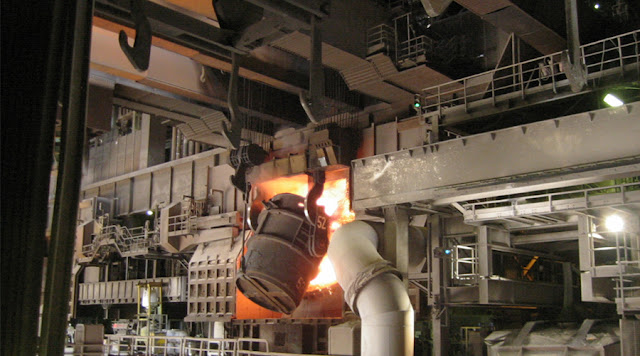Converter Furnace Characteristics, Classification & Advantages
The converter furnace is the key equipment in the field of metallurgy and metal processing. It is a metallurgical furnace for blowing steel or blowing matte.
This type of furnace is often used in a refining process known as the Bessemer process.
During this process, impurities such as carbon, silicon, and phosphorus are removed from molten iron to produce high-quality steel.
Characteristics Of Converter Furnace
The converter body is rotatable. The furnace body is made of steel plates and is cylindrical in shape. It is lined with refractory materials. It's heated by chemical reaction heat during blowing and does not require an external heating source. It's the most important steelmaking equipment and can also be used for copper, Nickel smelting.
One of the main features of a converter is its ability to convert raw materials through chemical reactions. The reaction involves blowing air into molten metal, causing impurities to oxidize and form slag, which is then removed, leaving pure steel behind.
Classification of Converter Furnaces
According to the refractory properties of the lining, the converter is divided into alkaline (lined with magnesia or dolomite) and acidic (lined with siliceous material) converters;
According to the part where the gas is blown into the furnace, it is divided into bottom blowing, top blowing and side blowing converters;
According to the gas used in blowing, it is divided into air converter and oxygen converter.
Characteristics of HANI Converter Furnace Steelmaking
Converter furnaces are commonly used in the steel industry to help produce high-quality steel. Converter steelmaking mainly uses liquid pig iron as the raw material for steelmaking.
Its main features are:
Relying on the physical heat of the liquid pig iron in the converter and the heat generated by the chemical reaction of each component of the pig iron (such as carbon, manganese, silicon, phosphorus, etc.) with the oxygen fed into the furnace, the metal reaches the composition and temperature required for tapping. .
Furnace materials are mainly molten iron and slagging materials (such as lime, quartz, fluorite, etc.), in order to adjust the temperature, steel scrap and a small amount of cold pig iron and ore can be added.
In the converter steelmaking process, the carbon in the molten iron and the blown oxygen at high temperature generate a mixed gas of carbon monoxide and a small amount of carbon dioxide, namely converter gas.
The amount of converter gas generated is not uniform during a smelting process, and the composition also changes. Usually, the gas recovered from multiple smelting processes in the converter is cooled, dusted, input into the gas storage cabinet, mixed and then transported to the user
Converters are available in different designs and sizes to meet specific requirements.
The two main types are the Basic Converter Furnace (BOF) and the Electric Arc Furnace (EAF). A converter uses pure oxygen to speed up the oxidation process, while an electric arc furnace uses an electric arc to heat the metal.
Advantages of Converter
Converters offer several advantages over conventional furnaces.
First, it enables higher productivity, enabling industries to meet the growing demand for various metal products.
In addition, it provides greater control over the composition of the final product, ensuring consistent quality and meeting stringent industry standards.
Another significant advantage of converters is their energy efficiency. The use of oxygen in the converter significantly reduces the time required for the refining process, thereby reducing energy consumption. In addition, electric arc furnaces are especially beneficial because they utilize recycled steel, reducing the need for new raw materials and minimizing environmental impact.
However, like any industrial equipment, converters have their limitations and challenges. The high temperatures involved in the process can cause severe wear to the furnace lining, requiring regular maintenance and replacement. Additionally, furnaces can be expensive to operate and maintain, making them a significant investment for industry.
In short, the converter furnace is an important tool in the metallurgy and metalworking industry. Its ability to transform raw materials into high-quality products has revolutionized the production of steel and other metal alloys. Despite certain challenges, the benefits of the converter far outweigh its limitations, making it an indispensable asset in many manufacturing processes.
If you have any needs, please feel free to contact us.
E-mail: saleswn@hanrm.com / inquiry66@hanmetallurgy.com (Daisy Zhai)
Tel / Whatsapp / Wechat: 0086 17791213533
Xi'an Hani Tech Co., Ltd.



Comments
Post a Comment